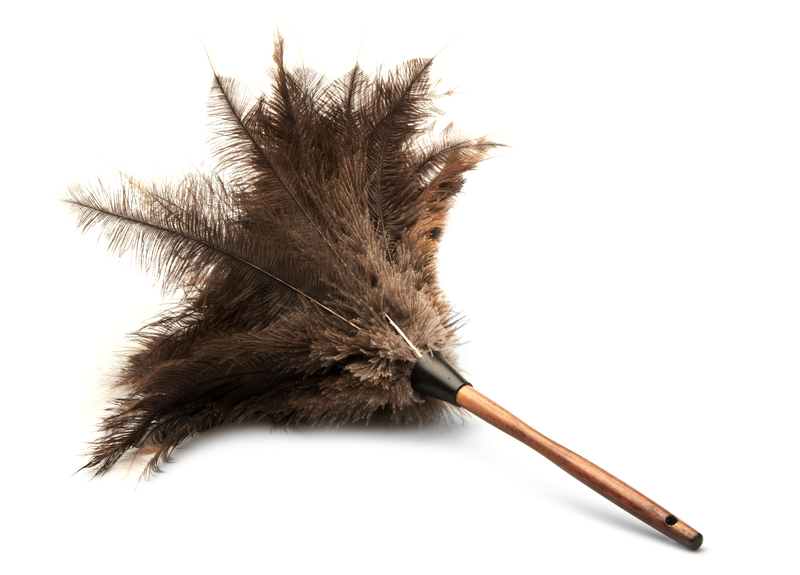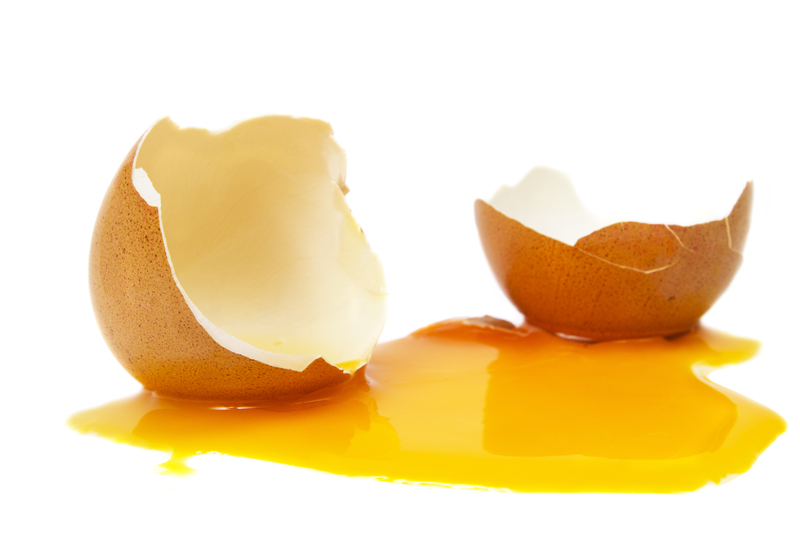How to Achieve a Refreshingly Mold-Free Bathroom
Posted on 31/08/2025
How to Achieve a Refreshingly Mold-Free Bathroom
A mold-free bathroom is not just a dream--it's a healthy, comfortable reality within your reach. Mold and mildew are all too common in bathrooms, attracted by moisture, warmth, and organic material. The good news is, you can create a bright, pristine, and refreshingly clean bathroom oasis by understanding how mold thrives and implementing proven strategies to keep it at bay. In this comprehensive guide, you'll discover effective tips, products, and cleaning routines to ensure your bathroom remains a sanctuary--completely free of mold and mildew.
Why Is Mold Such a Common Bathroom Problem?
Bathrooms provide the perfect environment for mold growth due to their high humidity levels, limited ventilation, and frequent water exposure. Mold spores are everywhere in the air, but they only become visible problems when given the chance to grow.
- Warmth: Showers and baths increase room temperature, helping mold and mildew thrive.
- Moisture: Condensation on walls, ceilings, and mirrors provides ample water for mold.
- Poor ventilation: Inadequate airflow allows moisture to linger and fosters mold growth.
Once established, mold can be unsightly and even pose health risks like allergies and respiratory problems. That's why learning how to keep a bathroom mold-free is essential for you and your family's well-being.

The Importance of a Mold-Free Bathroom
Mold in the bathroom isn't just an eyesore--it's a health hazard. Prolonged mold exposure can lead to symptoms such as sneezing, chronic cough, nasal congestion, throat irritations, and even skin rashes. In severe cases, certain mold strains (like black mold) may be linked to more serious health complications.
_Understanding why it's critical to have a mold-resistant bathroom is the first step towards maintaining a safe, healthy home environment._
Comprehensive Steps to Achieve a Refreshingly Mold-Free Bathroom
Prevention is always easier than cure when it comes to mold. Here are systematic, actionable steps you can take to ensure your bathroom never becomes a breeding ground for mold and mildew.
1. Maximize Bathroom Ventilation
Proper ventilation is the single most important step for maintaining a mold-free bathroom environment. Without adequate airflow, moisture lingers, and so does the risk of mold.
- Use Exhaust Fans: Always run the exhaust fan during and for at least 30 minutes after a shower or bath. If you don't have a fan, install one or consider a window-mounted ventilation unit.
- Open Windows: Leave windows slightly open whenever weather permits to allow fresh air circulation.
- Keep Doors Open: Leave the bathroom door ajar after use to let trapped moisture escape.
_Pro tip: Regularly clean your exhaust fan to ensure it's working at maximum efficiency._
2. Control Bathroom Humidity Levels
To keep your bathroom mold-free, it's crucial to maintain indoor humidity below 60%, ideally between 30-50%.
- Use a Dehumidifier: A compact bathroom dehumidifier can dramatically reduce moisture levels.
- Monitor Humidity: Invest in a simple digital hygrometer to track and maintain ideal humidity.
- Keep Bathmats and Towels Dry: Wet fabrics are notorious for facilitating mold growth. Hang and air-dry towels and mats after use.
_If your bathroom retains steam or you notice condensation on surfaces, don't wait--act immediately to reduce humidity!_
3. Eliminate Water Leaks and Drips
Water leaks behind toilets, under sinks, or around bathing areas are among the most common causes of persistent bathroom mold problems.
- Inspect Regularly: Check all plumbing fixtures, pipes, seals, and grout lines for leaks or water stains.
- Prompt Repairs: Address any leaks immediately, even small drips, to prevent unseen water pooling and potential mold outbreaks.
- Maintain Caulk and Grout: Replace old or cracked caulk and grout around tubs, showers, and sinks--these are common mold hotspots.
Jump to best cleaning practices
4. Clean Surfaces Frequently and Thoroughly
Cleaning regularly is key to maintaining a mold-free bathroom. Mold spores settle on surfaces easily but can be removed with routine cleaning.
- Use Mold-Inhibiting Cleaners: Choose sprays or wipes containing antimicrobial or antifungal compounds.
- Homemade Cleaning Solutions: White vinegar, hydrogen peroxide, and baking soda are effective, natural cleaning agents for killing mold spores.
- Pay Special Attention: Focus on walls, ceilings, behind the toilet, sink areas, and all grout lines.
_A weekly deep clean, combined with daily wipe-downs of moist areas, will keep mold spores from gaining a foothold._
Best Practices for a Mould-Resistant Bathroom
Choose Mold-Resistant Building Materials
- Mold-Resistant Paint: Consider repainting your bathroom with mold-inhibiting paints--these contain special additives that stop mold growth.
- Ventilated Wall Panels: Upgrade to PVC panels or ceramic tiles, which are much less porous than drywall or wood.
- Anti-Mold Grout: Use grout mixed with mildew-resistant additives for all tiling and wet wall areas.
Installing the right materials during any renovation or minor update pays off in the long run by making your bathroom less inviting to mold and mildew.
Optimize Bathroom Design
- Increase Natural Light: Mold loves dark spaces. If possible, add a window or a skylight--UV rays kill mold spores!
- Reduce Clutter: Remove unnecessary items from the shower ledge or around the sink to allow for easy cleaning and better air movement.
- Install Shelving: Use wire shelves rather than solid surfaces to encourage airflow around bath products.
Regular bathroom organization means fewer places for moisture and mold spores to hide.
Smart Habits to Prevent Mold Growth
- Shower with the Fan On: Always use the exhaust fan during every bath or shower session.
- Wipe Down Wet Surfaces: Squeegee tiles, doors, and bathtubs after use to remove excess water.
- Empty Waste Bins Often: Bathroom trash is often damp--don't let it sit too long.
- Keep Shower Curtains Spread Open: This allows them to dry evenly, preventing moisture build-up in folds.
- Avoid Leaving Wet Clothes: Don't keep laundry or wet towels piled up--they're a mold magnet.
Guide to Removing Existing Bathroom Mold
Even in the cleanest homes, mold can sometimes appear. Early intervention is critical! Here's how to safely and effectively remove mold and get your bathroom refreshingly clean once more.
What Supplies Will You Need?
- Rubber gloves and safety goggles
- Face mask or respirator rated for mold spores
- Scrub brushes and non-abrasive sponges
- Mold remover (commercial or homemade: white vinegar, hydrogen peroxide, or baking soda paste)
- Old towels or absorbent rags
Step-by-Step Mold Removal Process
- Ventilate the Area: Open windows and run the exhaust fan during the cleaning process.
- Apply the Cleaner: Spray a generous amount of chosen cleaner on all affected surfaces.
- Let It Sit: Allow the cleaner to work for at least 10-15 minutes--time is needed to penetrate and break down mold.
- Scrub Thoroughly: Use a brush or sponge to dislodge mold. For grout lines, a toothbrush works wonders.
- Rinse and Dry: After scrubbing, rinse the area with clean water and dry completely with towels or rags.
Tip: If stains persist, repeat the process or try a stronger commercial mold remover formulated for bathrooms.
When To Call in the Professionals
If you notice persistent moldy odors, large mold patches (larger than 10 square feet), or if the mold keeps returning despite your best efforts, it's time to call a professional mold remediation service. Hidden mold in walls, ceilings, or under flooring should always be addressed by experts to protect your health and prevent further damage.
Recommended Mold-Preventing Products
- Mold-resistant bathroom paint and primers - Found at hardware stores, these coatings help prevent wall or ceiling mold in the first place.
- Dehumidifiers - Compact and designed for bathrooms, these keep moisture below the levels where mold thrives.
- Automatic Shower Cleaners - Devices that spray mold-preventing solutions after each shower.
- Silicone-based caulks - More water-resistant than acrylic caulk and less likely to develop mold.
- Ventilation upgrades - Modern, quieter exhaust fans or smart fans that turn on when humidity rises.
Tip: Always check the labels for "mold resistant" or "anti-microbial" claims and follow product instructions for the best results.
Quick Reference: Mold-Free Bathroom Checklist
- Run the exhaust fan or open a window after every shower or bath
- Wipe down shower doors, tiles, and tub walls daily
- Launder towels and mats frequently, drying them thoroughly
- Repair leaky faucets, seals, and plumbing immediately
- Inspect grout, caulk, and pipes monthly for signs of mold
- Deep-clean the bathroom weekly with a mold-inhibiting agent

Frequently Asked Questions on Mold and Bathroom Hygiene
Can Mold Grow Behind Bathroom Walls?
Yes, mold can thrive unseen in areas where water has seeped through tile seams, grout, or around fixtures. If you notice musty smells or persistent wall discoloration, have a professional check for hidden mold.
What's the Best Way to Keep Showers Mold-Free?
Use a squeegee after each shower, keep shower doors open, and ensure adequate ventilation. Apply a weekly cleaning routine with an antimicrobial spray to maintain a mold-resistant shower.
Can Vinegar Kill Bathroom Mold?
Absolutely. White vinegar is a natural, effective and affordable mold killer. Spray undiluted vinegar on moldy areas, leave for an hour, scrub, then rinse well.
Why Does Mold Keep Coming Back?
Recurring mold problems usually indicate unresolved moisture issues or inadequate ventilation. Fix leaks, upgrade fans, and dehumidify regularly for lasting results.
Conclusion: Enjoy Your Refreshingly Mold-Free Bathroom
Maintaining a refreshingly clean, mold-free bathroom is entirely possible with the right habits, products, and vigilance. Whether you're making quick daily changes, upgrading ventilation, or completely renovating using mold-resistant materials, every step you take makes your bathroom healthier and significantly reduces the risk of mold and mildew.
Remember: the key to keeping your bathroom mold-free is persistence. Monitor moisture, clean regularly, and react quickly to any warning signs. With these strategies, your bathroom will remain a fresh, pleasant retreat--inviting for you, but unwelcome for mold!
Start today to reclaim your bathroom and breathe easy in a truly moldless space!



